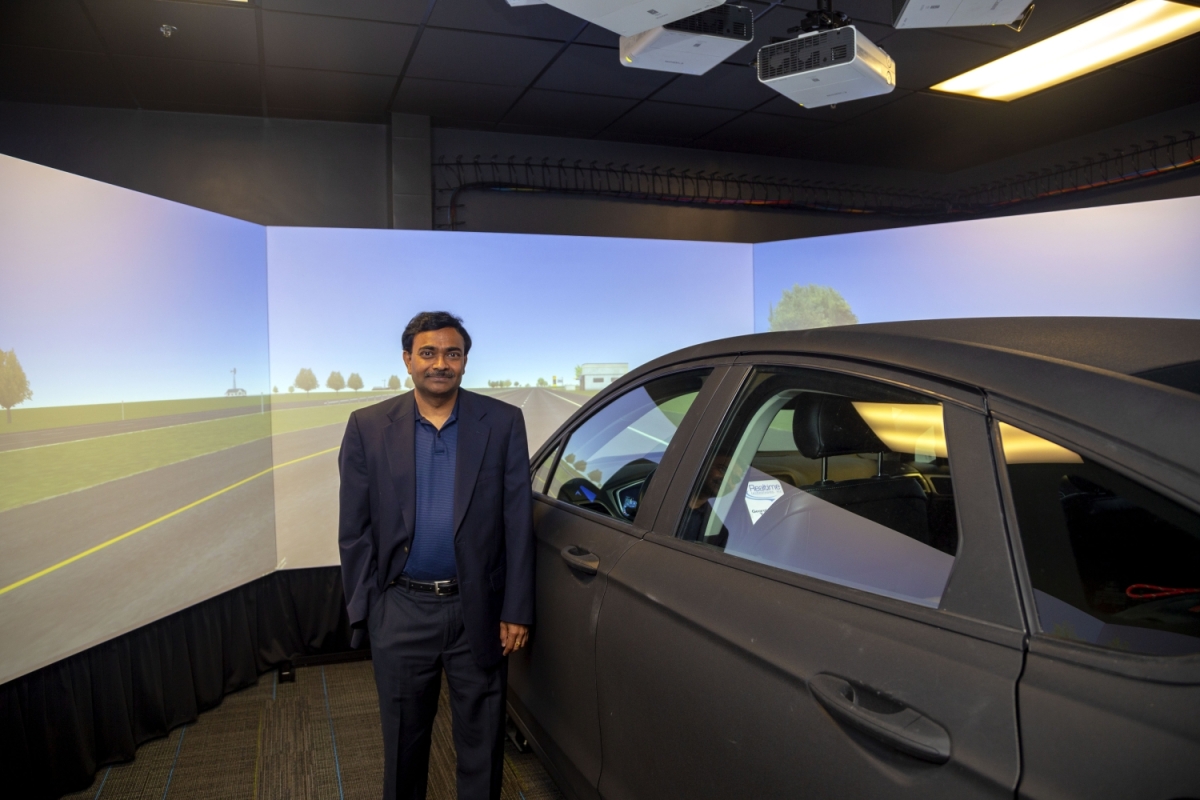
A grant from the National Institutes of Health will support a joint Georgia Tech-Emory Eye Center investigation of driver safety for people who have glaucoma.
The project, Piloting Augmented Reality Cues for Enhancing Driving Safety in Glaucoma, is a collaboration between Frederick R. Dickerson Chair and Professor Srinivas Peeta and Emory Eye Center researcher and clinician, Dr. Deepta Ghate.
Their joint project received a $50,000 award from NIH's Clinical and Translational Science Award, a program that promotes the transformation of laboratory-borne science into innovations and interventions that improve individual and public health.
Ultimately, Ghate and Peeta seek to improve driving safety for individuals with peripheral vision loss — a problem that affects 13 percent of the population over 65 years of age. Drivers with glaucoma have been found to be three to five times more likely to be in a motor vehicle accident.
Ghate's previous research found that drivers with glaucoma are less able to deal with distractions while driving as compared to elderly people without glaucoma.
“We believe that technology that cues road hazards—which is routine in many newer cars— may hamper elderly people with glaucoma rather than help. They may get distracted by the noise and the lights and, thus, make more mistakes while driving,” Ghate said.
The joint research project will evaluate which glaucoma patients may benefit from augmented reality (AR) cues. It will also seek to identify which driving tasks may be best communicated using AR cues.
Research will be conducted in Peeta’s Autonomous & Connected Transportation (ACT) Lab at Georgia Tech, which features a high-fidelity driving simulator that will be used to test the potential benefits of such cues.
“These driving simulator experiments will specifically focus on driving performance and mental workload to avoid introducing distraction to the driving task,” Peeta said. “Rigorous design of the driving simulator scenarios will allow us to evaluate which AR cuing modality (auditory or visual) will aid rather than interfere with glaucoma patients’ performance on various driving tasks.”
The experiments will also assist in attaining a balance between improving driving safety and increasing distraction in an already complex and cluttered driving environment, Peeta said.
The researchers will test driving performance in glaucoma patients and age-matched controls. Various driving performance metrics will be collected such as speed, acceleration, and time-to-collision. Data of the vehicle’s lateral position will also be used to evaluate participants’ ability to keep to their lane, given that some glaucoma patients find this task more challenging.
Eye-tracking data will also be collected throughout the experiments using the ACT Lab’s SmartEye system, including gaze direction and gaze duration data.
The collaboration between Georgia Tech and Emory enables translational research to generate new solutions that could positively impact people with glaucoma.
“Vision-related disabilities such as glaucoma can constrain the mobility of the elderly,” Peeta said. “As our country continues to age, emerging technologies such as AR provide potential opportunities to enable a significant segment of the population to drive safely while maintaining social independence.”
